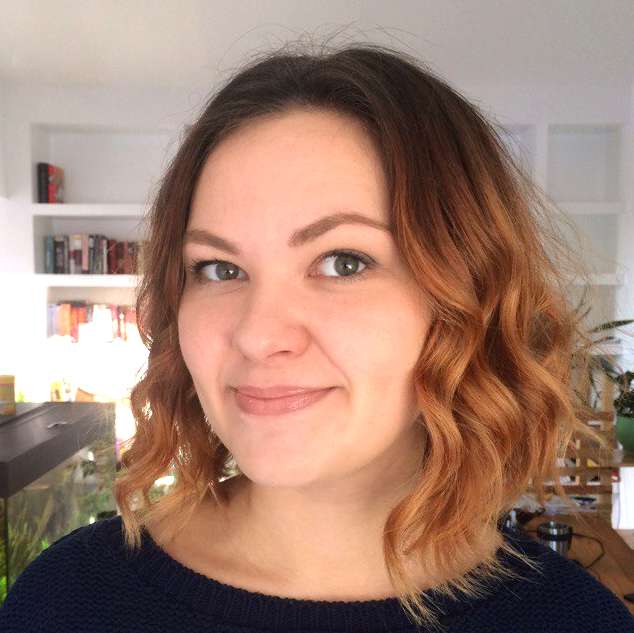Enterprise solutions for e-commerce
How we nearly committed a gobsmacked failure on an important project for us
A key distinctive feature of Azerbaijan E-commerce market is monopoly of big players. Launching an online store in such market is not an easy task to do. A startup with "room for mistake" is one thing, but a national-scale project with corresponding budget is a whole different story. It raises the bar extremely high — mistakes are simply inexcusable on such level.
Launching a project of creating an internet store for "MAXI.AZ" chain is that what we want to tell you about in this article. The choice of the object was no play of chance — it is a "no room for mistake" project. At first glance, there is nothing extraordinary in it. But, at a closer look, project "architecture" discloses venturous innovative solutions on a strong technological base. Moreover, the work on the project was made its way through various force-majeure, which could quite possibly destroy any development and put the entire work process under the threat of wrecking. Considering the mentioned issues, this project is an excellent illustration of new opportunities in management and technology, which disclose themselves during resolution of problems of higher difficulty with strict deadlines.
Launching a project of creating an internet store for "MAXI.AZ" chain is that what we want to tell you about in this article. The choice of the object was no play of chance — it is a "no room for mistake" project. At first glance, there is nothing extraordinary in it. But, at a closer look, project "architecture" discloses venturous innovative solutions on a strong technological base. Moreover, the work on the project was made its way through various force-majeure, which could quite possibly destroy any development and put the entire work process under the threat of wrecking. Considering the mentioned issues, this project is an excellent illustration of new opportunities in management and technology, which disclose themselves during resolution of problems of higher difficulty with strict deadlines.
Circumstances at the start of the project
Situation
Everything was done from scratch. Taking into account local mentality and differences in product lines, we were preparing the project on the distribution spots, signing contracts with vendors, training personnel, sketching business processes, and have launched a digital catalog – and, as a result, opened, according to expert opinion, one of the best electronics and household appliances hypermarket in the Caucasus region.
Tasks for development
Regional specificity of calculations: Azerbaijani commonly use taxit cards — credit cards with credit lines and complex system of credit rates: it was necessary to create calculation system considering this specificity.
Perspective scaling: The project task required providing growth of the amount of merchandise to hundreds of thousands. Even though "MAXI" trademark was launched only in such segments as electronics, household and office appliances, and photo and video technology, segments of other type could be added at any point. That could be, for example, clothing and shoes, which are goods with a whole different measurement model (shape, color, etc.). Technical enquiry also required accounting for an opportunity of selling service and unusual goods without reducing performance, response time, and download speed.
Work in Marketplace mode: Marketplace is an online platform which sells its own goods as well as goods from other producers within a unified catalog, also providing purchase checkout and transmitting order details to the ultimate owner. Project implied work organizing process in this exact mode. Developing internet stores in accordance with marketplace model is quite a perspective topic; that is why in our upcoming article "Marketplace is the next step of internet store evolution" we will analyze this trend.
Bilingual project: Since almost 90% of Azerbaijani citizens speak only Azerbaijani language, the project was launched in two languages.
Perspective scaling: The project task required providing growth of the amount of merchandise to hundreds of thousands. Even though "MAXI" trademark was launched only in such segments as electronics, household and office appliances, and photo and video technology, segments of other type could be added at any point. That could be, for example, clothing and shoes, which are goods with a whole different measurement model (shape, color, etc.). Technical enquiry also required accounting for an opportunity of selling service and unusual goods without reducing performance, response time, and download speed.
Work in Marketplace mode: Marketplace is an online platform which sells its own goods as well as goods from other producers within a unified catalog, also providing purchase checkout and transmitting order details to the ultimate owner. Project implied work organizing process in this exact mode. Developing internet stores in accordance with marketplace model is quite a perspective topic; that is why in our upcoming article "Marketplace is the next step of internet store evolution" we will analyze this trend.
Bilingual project: Since almost 90% of Azerbaijani citizens speak only Azerbaijani language, the project was launched in two languages.
Project start
Beginning of development
At first, we planned on using a tried-and-true business model: quick start, feedback, immediate adjustments, new functionality addition — a continuous chain of development cycles and feedback analysis.
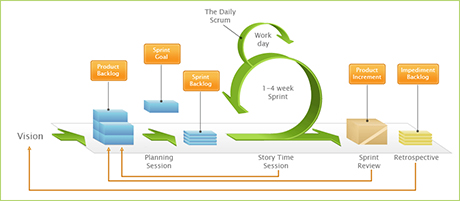
Our platform for development was "Bitrix24", and we had solid reasons for choosing it:
1. Our arsenal included a library composed of more than a hund red components worked outonother "Bitrix" projects: those were components of a proven quality and excellent image which are used for work on complex marketing, on business processes, on tasks involving work with large product catalogs, and on integration systems.
2. Our client used "Enterprise" accounting system, and we had an experience of close integration with this ERP.
3. Client managers had already had positive experience of working with our platform.
4. Product line launch should be done as soon as possible, and the platform allowed filling product catalog long before the main functionality was ready.
Work was going intensively.
1. Our arsenal included a library composed of more than a hund red components worked outonother "Bitrix" projects: those were components of a proven quality and excellent image which are used for work on complex marketing, on business processes, on tasks involving work with large product catalogs, and on integration systems.
2. Our client used "Enterprise" accounting system, and we had an experience of close integration with this ERP.
3. Client managers had already had positive experience of working with our platform.
4. Product line launch should be done as soon as possible, and the platform allowed filling product catalog long before the main functionality was ready.
Work was going intensively.
Force majeure equal to a catastrophe
But, a month after the project start, one event changed everything fundamentally.
During one meeting, the client told us that marketing division had decided to change future trademark image and designed a new "brand book", while the launch deadline was decided to be moved two months earlier than the planned date. As a result, the project was under the threat of wrecking which could derail all work we had done!
During one meeting, the client told us that marketing division had decided to change future trademark image and designed a new "brand book", while the launch deadline was decided to be moved two months earlier than the planned date. As a result, the project was under the threat of wrecking which could derail all work we had done!
By this time, around 30models were designed. The graphical part of the project was totally completed —front-end development was about to begin.
It is only a small part of the work done by the moment of force-majeure
It is only a small part of the work done by the moment of force-majeure
How we acted in the situation of sudden "about-face"
Having realized the level of catastrophe, we understood that we would not be able to manage on our own. The technological part went in accordance with the schedule, but creating design for such a large-scale project from scratch required time we did not have.
Fortunately, we had under our belt an experience of working with guys from "SensePro" — ourpartnerswhowecouldconfidentlyrelyonknowingtheirprofessionality, responsibility, and ability to live and breathe the project. "SensePro" is a company of professional designers whose portfolio included such projects, well-known in the CIS, as "DON PION", "Ultra.BY", "Тот самый F.ua", and "SL-IRA". The colleagues agreed to give us a hand and dove into work as quickly as they could. They took under control the development of new adaptive design by the discussed deadline and took lead on negotiating the entire visual part with the client. The "SensePro" leader of the work was Irina Kopylova.
Consumer psychology in Azerbaijan has its peculiarities— Azerbaijani audience value convenient up-to-date websites as much as Ukrainians do. That is why Irina decided to use the "flat design" concept with large interface elements – it is a well-tested design concept, earned good reputation on Ukrainian market and pretty much bound to be successful.
Fortunately, we had under our belt an experience of working with guys from "SensePro" — ourpartnerswhowecouldconfidentlyrelyonknowingtheirprofessionality, responsibility, and ability to live and breathe the project. "SensePro" is a company of professional designers whose portfolio included such projects, well-known in the CIS, as "DON PION", "Ultra.BY", "Тот самый F.ua", and "SL-IRA". The colleagues agreed to give us a hand and dove into work as quickly as they could. They took under control the development of new adaptive design by the discussed deadline and took lead on negotiating the entire visual part with the client. The "SensePro" leader of the work was Irina Kopylova.
Consumer psychology in Azerbaijan has its peculiarities— Azerbaijani audience value convenient up-to-date websites as much as Ukrainians do. That is why Irina decided to use the "flat design" concept with large interface elements – it is a well-tested design concept, earned good reputation on Ukrainian market and pretty much bound to be successful.
Active stage of the project
Two teams in one project
Considering the circumstances we had faced, we developed a business process involving cooperation of three work groups:
1. Design team was to analyze client's demands, to affirm concepts of each project module, and to make a prototype.
2. The prototype was discussed with development team with a checklist which, among other questions, included:
— What will behavior be like for different types of content?
— How easy it is to implement visual design?
— Can it be simplified or can another case be used?
3. The final design was released in three resolutions — 1366, 768,and 320 (and some certain blocks in 960) to make viewing the website convenient from any devices.
4. Development team was working on layout, while QA engineer was testing cross browser and cross device compatibility — it was done with specific software (want to know more? Request), and by device virtualization.
5. The landed layouts underwent "designer control" for correspondence (designer often finds a lot of discrepancies in such situations).
6. Layouts then were passed on to be developed and were discussed with the client. As a result, the functionality started working: catalogs were being filtered, products – purchased, and orders placed.
This approach gave us an efficient production model — each team was working on a functionally complete segment, team manager took responsibility of communicating with the client and was passing the completed result on to the next one in the chain.
1. Design team was to analyze client's demands, to affirm concepts of each project module, and to make a prototype.
2. The prototype was discussed with development team with a checklist which, among other questions, included:
— What will behavior be like for different types of content?
— How easy it is to implement visual design?
— Can it be simplified or can another case be used?
3. The final design was released in three resolutions — 1366, 768,and 320 (and some certain blocks in 960) to make viewing the website convenient from any devices.
4. Development team was working on layout, while QA engineer was testing cross browser and cross device compatibility — it was done with specific software (want to know more? Request), and by device virtualization.
5. The landed layouts underwent "designer control" for correspondence (designer often finds a lot of discrepancies in such situations).
6. Layouts then were passed on to be developed and were discussed with the client. As a result, the functionality started working: catalogs were being filtered, products – purchased, and orders placed.
This approach gave us an efficient production model — each team was working on a functionally complete segment, team manager took responsibility of communicating with the client and was passing the completed result on to the next one in the chain.
What was important at this stage – Feedback of the participants
This approach gave us an efficient production model — each team was working on a functionally complete segment, and team managers took responsibility of communicating with the client and were passing the completed result on to the next one in the chain. We were really lucky that the client provided the content of a good quality at the earlier stages of development. Client's business processes were described to us perfectly, which allowed us to plan the architecture clearly from the very beginning without changing it later.

Maya Sokolskaya
Aniart project manager
It is also worth mentioning that the client was involved in the process as much as we were. We contacted Dmitriy several times a day, offered layouts for him to approve, exchanged suggestions, received feedback and sometimes constructive critics. Calls often happened during gaps between meetings and took no more than a minute, but the results of those rapid briefings allowed us to move on at the same pace. Delays were intolerable, and the client understood it as well as we did.
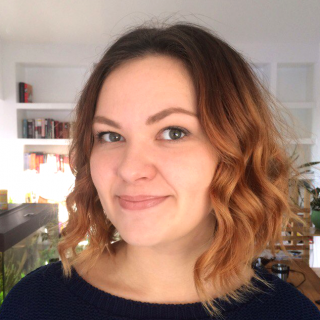
Iryna Kopylova
Sense Production project manager
The starting stage of development defines success of the entire project by laying the groundwork. Qualitative communications guarantee that our demands will be considered and all "surprises" ruled out.

Dmitry Deulin
MAXI chain e-commerce sector manager
Marketing is a key to winning market advantage
On competitive markets, novices only have chances with top-notch marketing
Client's marketing was working at full capacity, and we had to not only consider it in our work on the project, but also to develop full-featured ways of online implementation of client's marketing possibilities. And that is exactly what we did.
Resolving client's marketing tasks is our sphere of responsibility. We would like to comment on the most interesting ones
Taxit cards
Classic model of trade billing(not only online) implies accepting payments from one source using one type of payment — paying one bill from different credit/debit cards is not allowed, as well as mixed payment — by cash and from bank account.
But Azerbaijani domestic market has a peculiarity that can bring business analysts to their wit's end — the aforementioned taxit cards. Paying with such card, client makes payment in parts by paying a percentage from the total cost of an order. Interest rates differ not only for different banks, but even for different distributor networks which accept payments by plastic. Almost every Azerbaijani customer has several taxit cards. In other words, if customers choose the right card, they can save a considerable amount of money buying the same product.
That is why in our project we implemented payments from different sources. It complicated the process of paying for purchases multiple times and obliged us to add a dozen more checks, but it contributed to generating unusual but truly effective marketing solutions.
But Azerbaijani domestic market has a peculiarity that can bring business analysts to their wit's end — the aforementioned taxit cards. Paying with such card, client makes payment in parts by paying a percentage from the total cost of an order. Interest rates differ not only for different banks, but even for different distributor networks which accept payments by plastic. Almost every Azerbaijani customer has several taxit cards. In other words, if customers choose the right card, they can save a considerable amount of money buying the same product.
That is why in our project we implemented payments from different sources. It complicated the process of paying for purchases multiple times and obliged us to add a dozen more checks, but it contributed to generating unusual but truly effective marketing solutions.
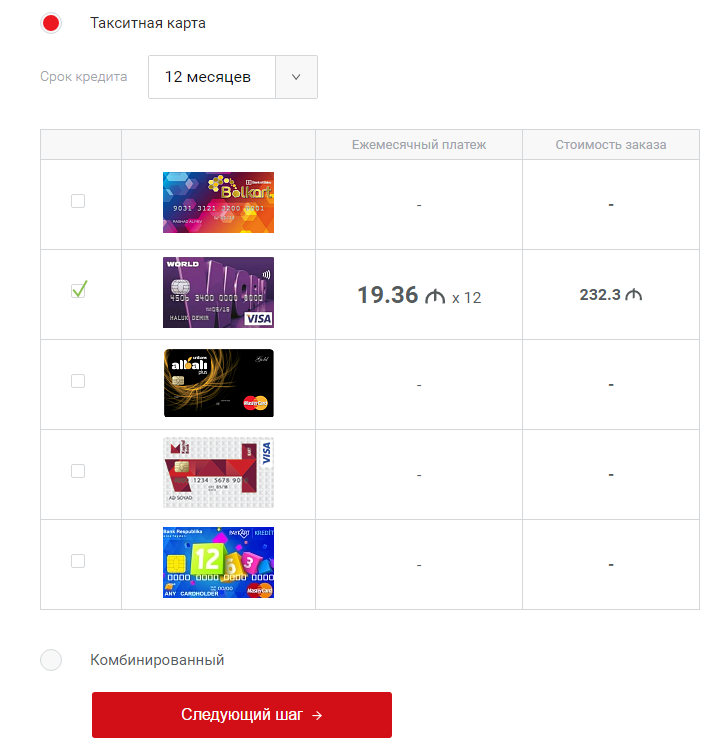
Price factor was accompanied by the factor of complicated creditterms. And,taking into account that cards can be combined, we got a multiple-value selection of "how to pay" options.
User-customer behavior in decision making process with so many payment options (and their combinations) was described by complex decision making matrices. For that reason, when design team created the visual part, it took us quite a lot of effort to encode calculation algorithms and provide text scripts for checking the latter.
User-customer behavior in decision making process with so many payment options (and their combinations) was described by complex decision making matrices. For that reason, when design team created the visual part, it took us quite a lot of effort to encode calculation algorithms and provide text scripts for checking the latter.
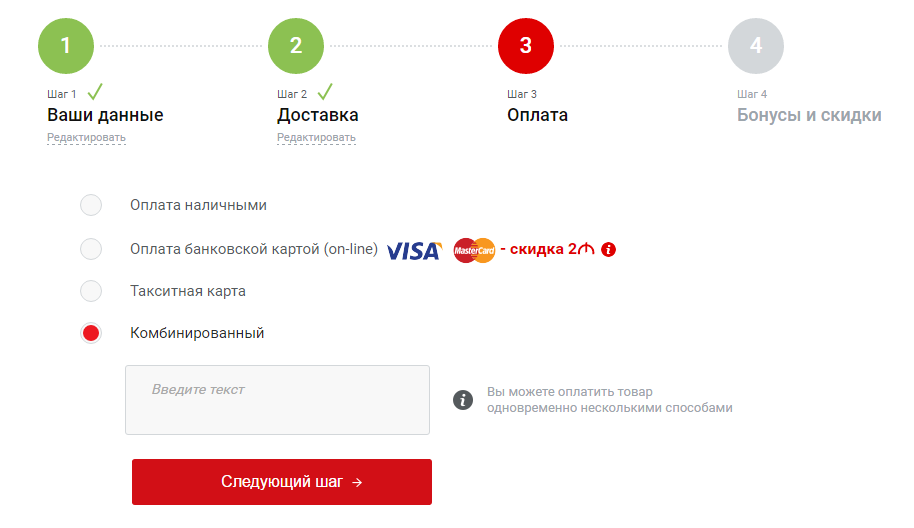
Bonus Plus
Enabling bonus system complicated payment acceptation massively: there were rules of calculating bonuses— their collection and the use of the already collected ones for partial paying for purchase. Number of payment option combinations doubled again.
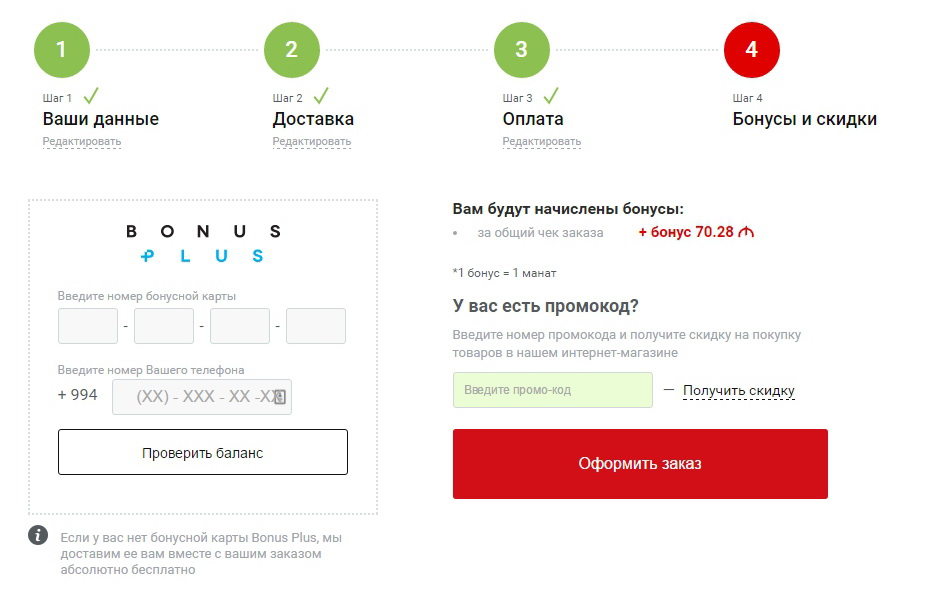
MAXI-gift
Customers could also get something that does not have direct relation to the goods sold in the store, as a gift. It could be a dinner for two or a cake from some confectionery, etc.
Such nice surprise was supposed to enhance emotional attachment to the brand, and has totally paid off.
Such nice surprise was supposed to enhance emotional attachment to the brand, and has totally paid off.
Payment with promo codes
The client was fully using the asset of all possible marketing methods, so, we had to implement promo code algorithm — getting discounts in percent from price or in fixed sums for certain product groups.
MAXI-discounts
In Azerbaijan, people like various discounts and special offers — such specificity of the oriental mentality must not be neglected.
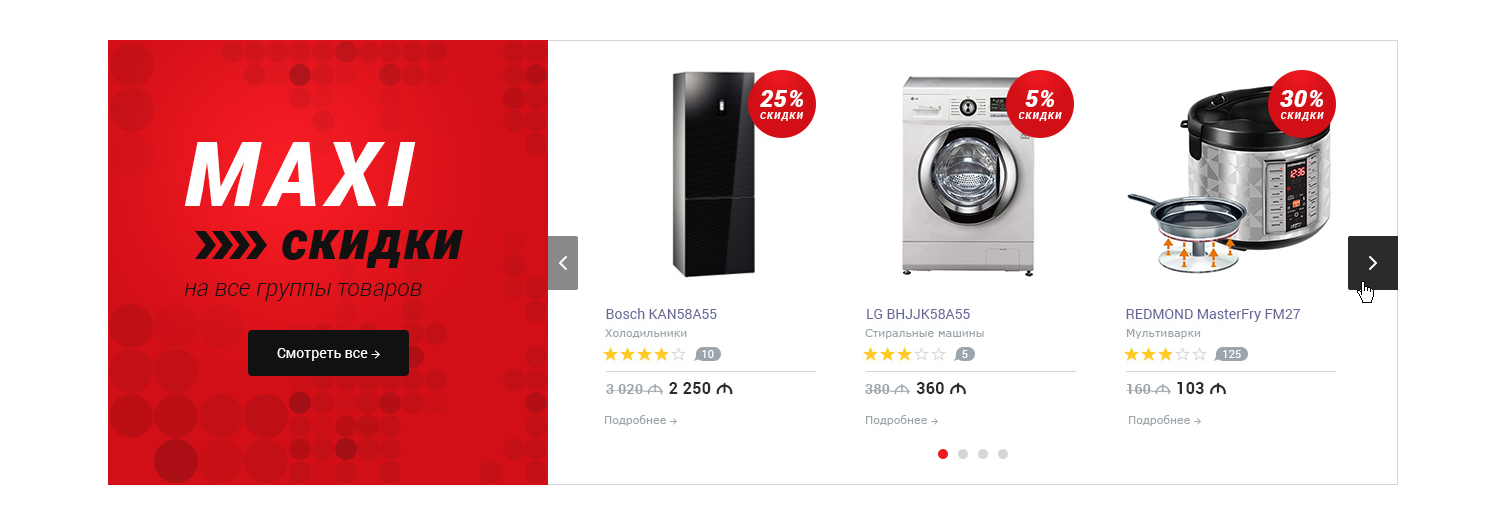
Combined payment
As we have already mentioned, it is common for Azerbaijani market to pay for purchases using different payment methods at the same time. Say, a phone costs 215 manat (Azerbaijani currency), 100 manat of which the customer pays in cash, 50 manat from a taxit card, and 65 manat — from a bank card, having the choice of credit line alongside.
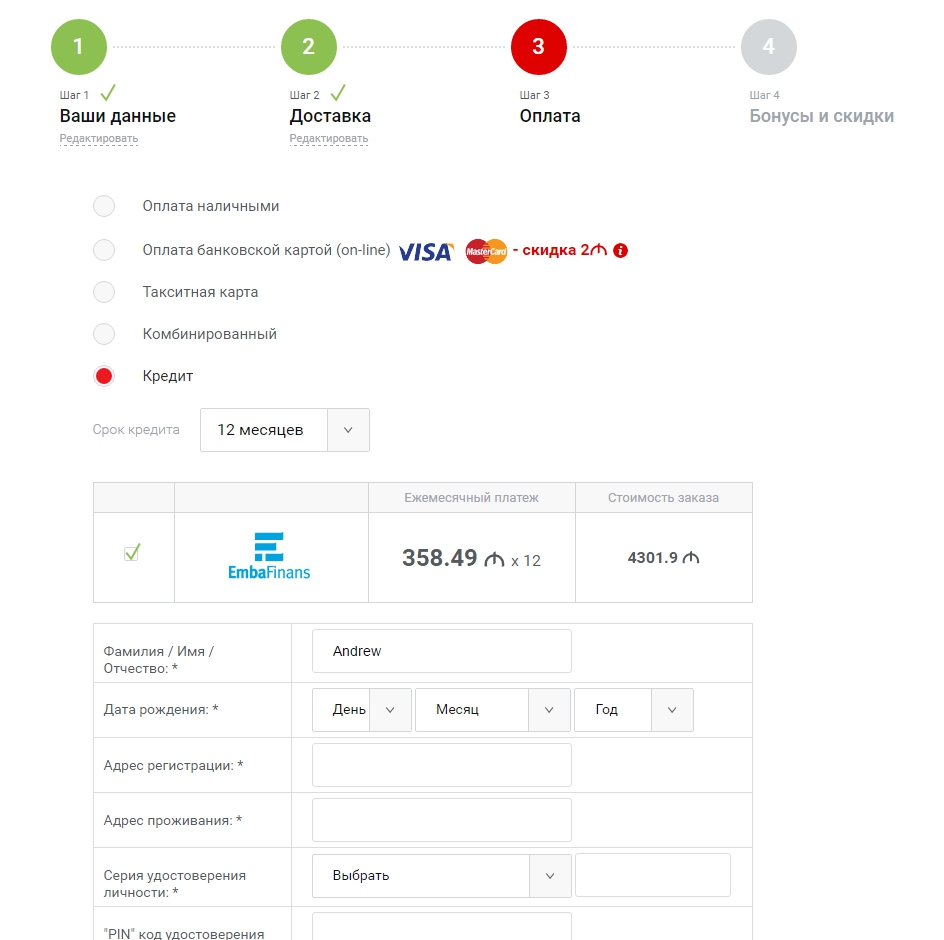
Preorder block on Main Page
There are lots of people who strive to obtain a long-expected newest specialty before anyone else. For instance, an opportunity to become one of the first owners of the latest iPhone is a strong incentive which encourages to make a purchase as soon as possible.
Special for such clients, we implemented a "Soon on sale" block, which contains already announced devices not launched on market yet. Visitors can make a preorder for these products and become their owners before other people.
Special for such clients, we implemented a "Soon on sale" block, which contains already announced devices not launched on market yet. Visitors can make a preorder for these products and become their owners before other people.
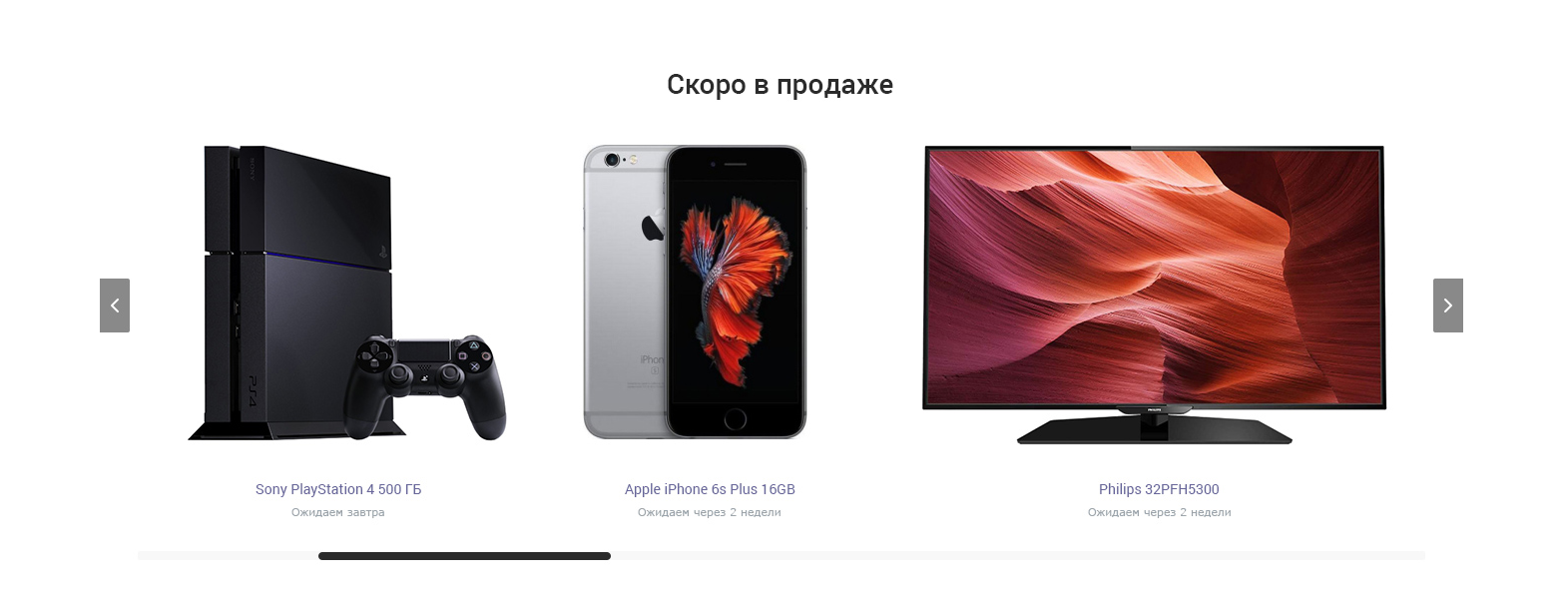
Business fail or marketing breakthrough?
A highly complicated purchase final cost calculation system became an entertaining calculator for users. What would be better — to use a coupon or to pay wit bonuses? What would monthly rate be if you take a loan for the purchase? Or would it maybe be better to add something 10 manat worth to your cart to reach the necessary sum total, so that the "discount for volume" would come into action, and then go into a loan?
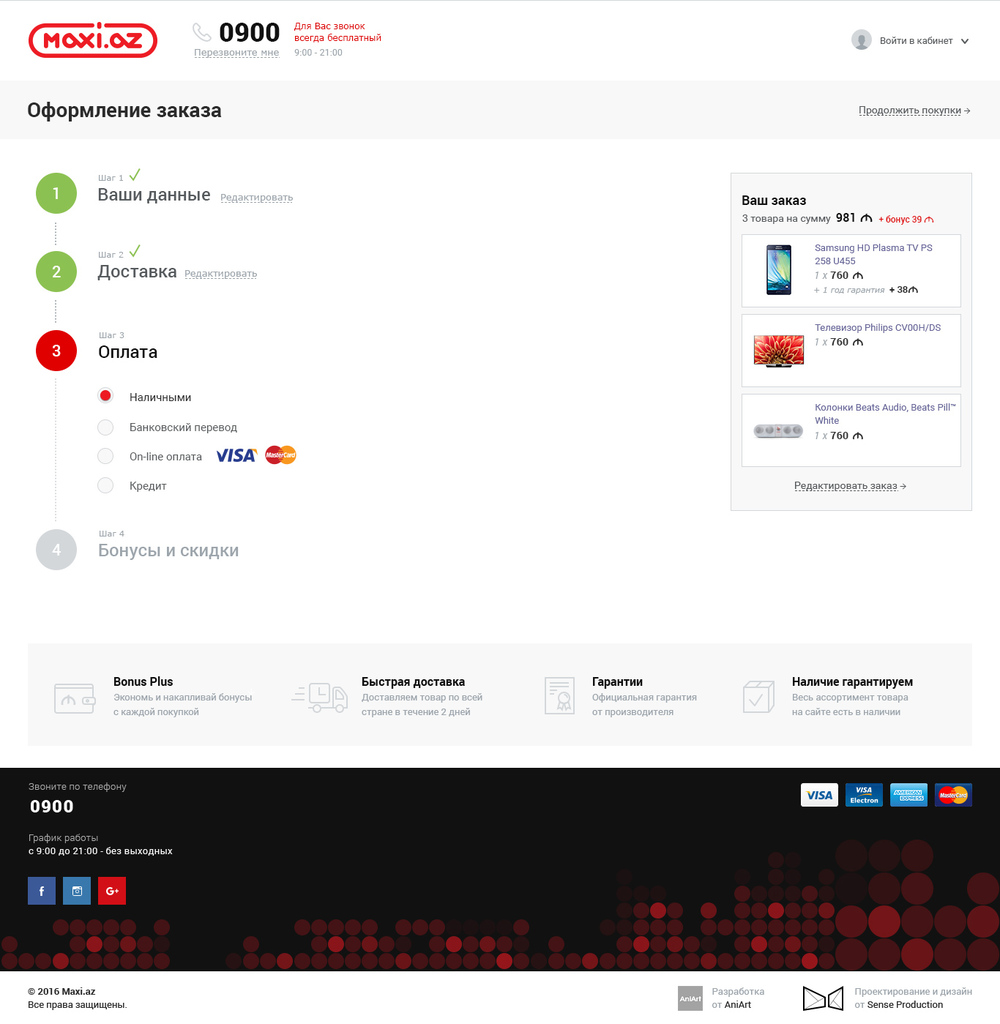
Client's marketing experts aptly used this specificity to launch viral ads. The information about a bug in the cart algorithm spread all over the Internet, along with the list of a "secret" sequence of bonuses, coupons, and taxit cards to be used for getting the undreamed-of low prices.

This is how viral marketing affected website traffic
To "imbue a product with potential to be bought" to the maximum, it must have landing done, all characteristics, advantages, and innovative features described in detail. It must be illustrated with high-quality content — with video, audio, staged photos: such material is often provided by producers, and then it is translated and adapted. Landing is not the most difficult job to do; it merely requires a designer and a content manager, but we were running out of time.
And we thought: what if we make pages of each product polymorphous? We used this approach here for the first time within a commercial project — and it brought excellent results. That is why we recommend it to everyone who understands that future is in content. Tandem technology looks like this: the catalog works in regular mode, but if there is personal landing for some product, it gets immediately built in the system — a regular product card turns into individual landing. Thus and so, the functions of a regular product card are supplemented by unique content and landing beauty. Of course, the first products to get landing are sales flagship devices and high-margin goods. With this approach, it becomes possible to gradually add landings to the catalog, thus providing unique content and beautiful design, and increasing organic traffic and time visitors spend on the website. It is indeed a simple, effective, and innovative approach — we strongly recommend it to the beginners of internet business as well as to the already working stores. It is especially on the front burner for clothing segments, jewelry stores, and marginal goods sellers. Go a little deeper, and you will find a revolutionary opportunity to cut the costs of the visual segment massively: cost effective template solution + tandem = "individual design" level solution.
Consult us to know more about tandem technology!
And we thought: what if we make pages of each product polymorphous? We used this approach here for the first time within a commercial project — and it brought excellent results. That is why we recommend it to everyone who understands that future is in content. Tandem technology looks like this: the catalog works in regular mode, but if there is personal landing for some product, it gets immediately built in the system — a regular product card turns into individual landing. Thus and so, the functions of a regular product card are supplemented by unique content and landing beauty. Of course, the first products to get landing are sales flagship devices and high-margin goods. With this approach, it becomes possible to gradually add landings to the catalog, thus providing unique content and beautiful design, and increasing organic traffic and time visitors spend on the website. It is indeed a simple, effective, and innovative approach — we strongly recommend it to the beginners of internet business as well as to the already working stores. It is especially on the front burner for clothing segments, jewelry stores, and marginal goods sellers. Go a little deeper, and you will find a revolutionary opportunity to cut the costs of the visual segment massively: cost effective template solution + tandem = "individual design" level solution.
Consult us to know more about tandem technology!
User documentation
We have done humongous amount of work and can confidently say that our client is fully prepared to act in any normal and abnormal situations.
|
User documentation The documentation includes instructions for managers and system administrators. Such way of documenting project allows turning a new worker into a team player quickly — a new developer or manager dives into project details in an extremely short time period. The documentation is posted in public access available for commenting, asking questions, and suggesting ways of improvement. The client actively uses it, and the contractor receives quick feedback. We prepared dozens of pages of user documentation on our project. Project implementation and project service scripts we have developed were tested in real-life conditions multiple times. |
|
Incident processing via ServiceDesk
However, even the most detailed documentation does not prevent questions. People can ask questions in comments to the articles on the topic, but we need the history of the problem and its relatedness. It is important to record the incident and to understand and classify the report. Each report can receive a link to the prepared article on problem resolution— user will wee the materials and solve the issue. A report may serve as a trigger for writing new instructions and an article— this way we get information about which functionality has not been described yet. Report can also be a reason for debugging or for creating new functionality. In this case, the task for development is created, and after it is resolved and changes go in production, the report is automatically closed, the user gets a notification saying that the problem has been resolved, and the link with the time it took to resolve the issue will appear in the related documentation along with the full information on what exactly was done and who checked and tested it.
Now we are implementing a global incident control system, which will provide support first line and lower the workload on project managers and developers.
Now we are implementing a global incident control system, which will provide support first line and lower the workload on project managers and developers.
Information architecture
In the meantime, we were working hard on the information architecture. The solution described below may seem simple and natural, but our colleagues in development on "1C-Bitrix" will appreciate the scale of this idea and its implementation. Due to this, we would like to go slightly in detail on the technical part.
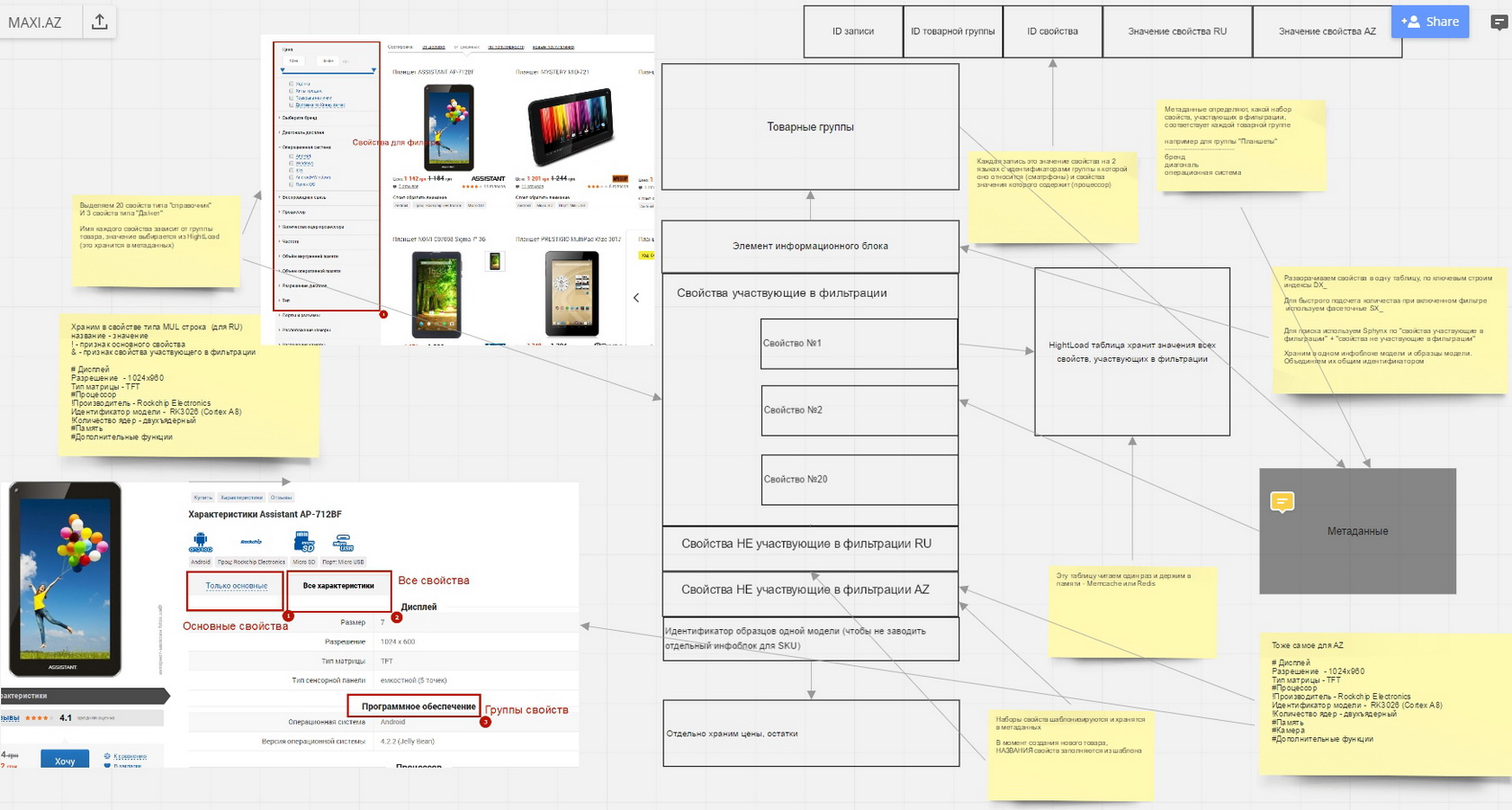
Multiple product groups imply that products from each group will be described with their own unique set of features. There are lots of product groups, new ones keep appearing, the number of features grows, another language gets added, which doubles the number of features and their values. It is similar to capital sentence for a system designed for high load. We managed to change the approach. The number of features is fixed and equal to the number in the largest group. В одних и тех же свойствах хранятся разные значения в зависимости от принадлежности к группе. Each group is described by metadata defining which features take part in filtration and which features are lists, value ranges, colors, yes/no options, or just text descriptions. It allowed us to get high-variable indices — with them, selections take minimum time. The number of indices is finite, and they all can be prepared or reformed in advance, depending on statistics of use in "battle-like" conditions.
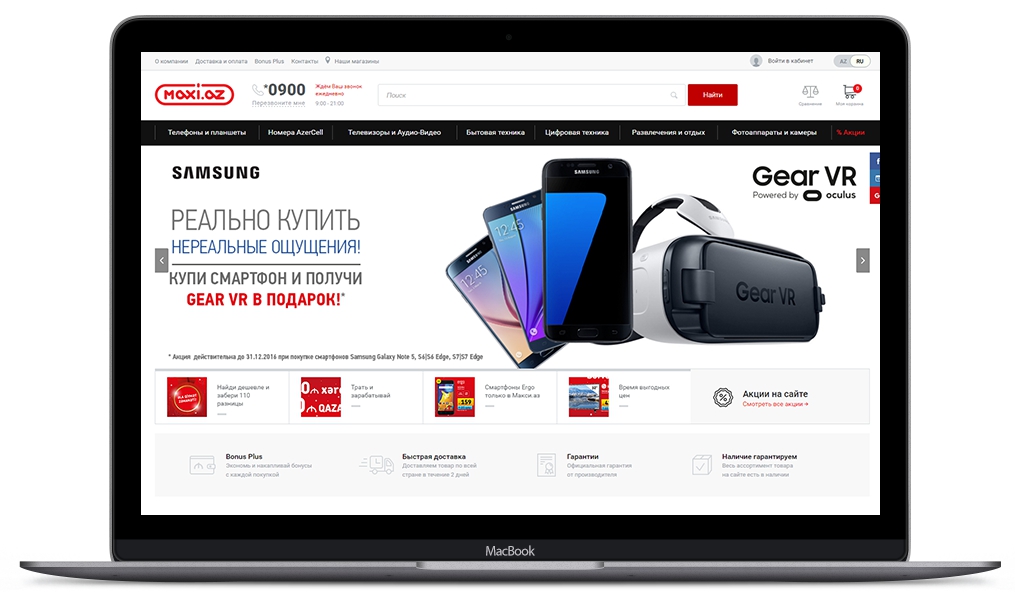
Sharding controller
Another revolutionary module that we have engineered but have not launched in this project is "data sharding controller". When the number of products reaches hundreds of thousands, the number of features grows with adding every group, and adding a new language means doubling the data. In such situation, it is necessary to distribute database on several servers; to not keep a related copy of the database, but to assign a separate server to the part of the data. For example, all products, sectors, and linked data of the "Electronics" segment are kept on one server; the similar pattern is for the "Household appliances" segment, for "Construction materials" and so on.
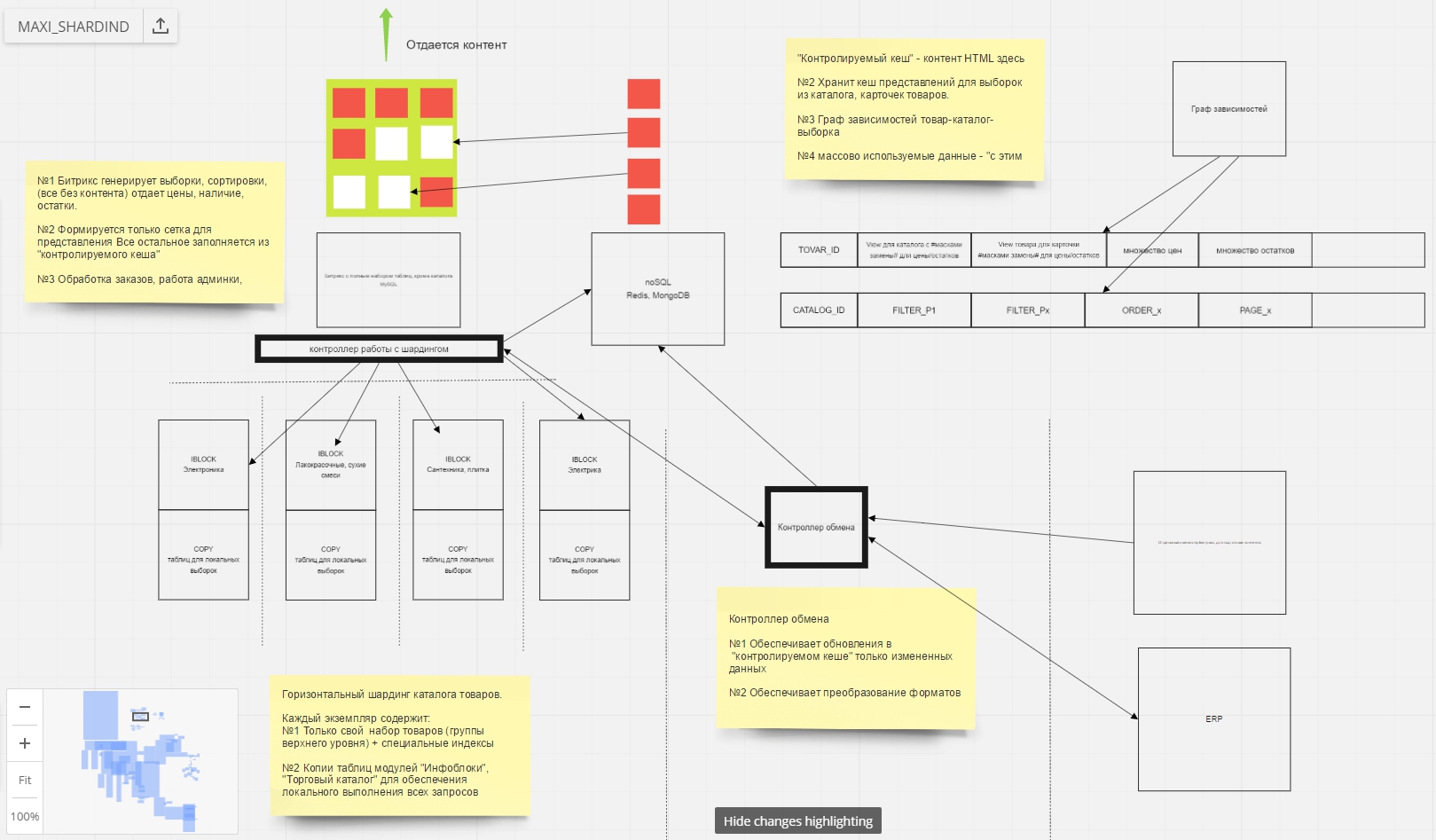
An important part of this system is "sharding controller" which "knows" which server keeps which data and carries out routing of user requests to the necessary system servers. This approach has limitations on simultaneous selections from several servers, but has an indisputable advantage — an unlimited scaling source. "Horizontal sharding" is effectively used in online — possibly, it was this very approach which our colleagues from 27.ua have implemented.
Algorithm of launching a successful e-commerce platform
And to conclude — a "signature recipe" from «Aniart» and "Sense Production" — how to launch a successful e-commerce platform on a competitive market, laying alongside a reliable groundwork for the future development:
1. Split specializations. We honestly admit that design and UI/UX are not our specialization; we are the best in technological solutions, and that is why we concentrated on that.
2. Provide maximum autonomy of teams in production process. Teams take responsibility for all local communications with the client and provide local results in the agreed standards. It provides assembly line technique of production.
3. Take the best from the existing approaches. A reasonable combination of the best practices results in new successful technologies. We are sure that the tandem we designed for content management will be widely used in e-commerce.
4. Take local market peculiarities into account: the experience of using credits and taxit cards acquired offline should be turned into visual constructor of the best conditions of making purchase. Customers should be able to use familiar payment tools online as well.
5. Any factor which may theoretically cause negative reaction must be turned into marketing offers and into a tool of rising interest to the platform. By grasping their mood, clients can be successfully "converted" into loyal customers
1. Split specializations. We honestly admit that design and UI/UX are not our specialization; we are the best in technological solutions, and that is why we concentrated on that.
2. Provide maximum autonomy of teams in production process. Teams take responsibility for all local communications with the client and provide local results in the agreed standards. It provides assembly line technique of production.
3. Take the best from the existing approaches. A reasonable combination of the best practices results in new successful technologies. We are sure that the tandem we designed for content management will be widely used in e-commerce.
4. Take local market peculiarities into account: the experience of using credits and taxit cards acquired offline should be turned into visual constructor of the best conditions of making purchase. Customers should be able to use familiar payment tools online as well.
5. Any factor which may theoretically cause negative reaction must be turned into marketing offers and into a tool of rising interest to the platform. By grasping their mood, clients can be successfully "converted" into loyal customers

Client's results
MAXI.AZ is the largest multibrand online electronics and household appliances retailer in Azerbaijan. MAXI.AZ founders set an ambitious goal — to become the best project in the sector of electronics and household appliances in the country. MAXI.AZ chain (trademark launched on market in 2016) has its roots and starts its history from 2006. During this time period, the company has come to being within a hair's breadth to the "super goal" and thus became one of the largest and most recognizable multichannel electronics and household appliances retailers in Azerbaijan.
7 months after launching online sector (directions):
— more than 4500 orders posted a month;
— website traffic has grown almost 3 times;
— all experience accumulated offline integrated;
— all national peculiarities of the local market taken into account;
— a powerful manageable and scalable resource for developing e-commerce gotten.
7 months after launching online sector (directions):
— more than 4500 orders posted a month;
— website traffic has grown almost 3 times;
— all experience accumulated offline integrated;
— all national peculiarities of the local market taken into account;
— a powerful manageable and scalable resource for developing e-commerce gotten.
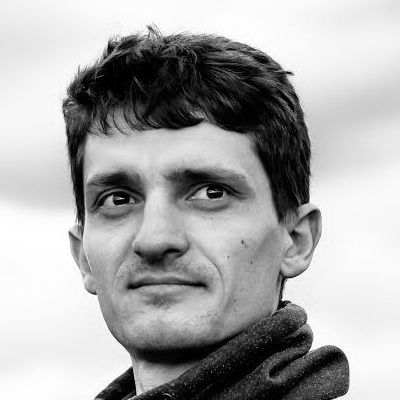
Developers' results
ANIART specializes in developing large-scale projects in e-commerce sector and ENTERPRISE solutions.
Sense Production is an e-commerce agency which specializes in founding internet stores and in building sales system with the peculiarities of each specific business taken into account
During the time of realizing the project — 2 months from the first meeting to the first release output (active stage of development — 4 pers.):
— about 20 models and almost twice as many prototypes were created;
— a management technique of team cooperation for difficult projects was worked out;
— a technological module – "Sharding controller" – for unlimited scaling was developed;
— an innovative module of keeping data for the projects of ENTERPRISE class was elaborated
Sense Production is an e-commerce agency which specializes in founding internet stores and in building sales system with the peculiarities of each specific business taken into account
During the time of realizing the project — 2 months from the first meeting to the first release output (active stage of development — 4 pers.):
— about 20 models and almost twice as many prototypes were created;
— a management technique of team cooperation for difficult projects was worked out;
— a technological module – "Sharding controller" – for unlimited scaling was developed;
— an innovative module of keeping data for the projects of ENTERPRISE class was elaborated
After launching, the projects gains audience, and conversion is growing.
Next on our agenda is development and implementation of the E-mail marketing concept. The retail network is big; there are many leads, contacts, and customers. There is an opportunity to use the advantages of client's simultaneous presence online and offline, and to use the acquired experience in omnichannel environment.
Next on our agenda is development and implementation of the E-mail marketing concept. The retail network is big; there are many leads, contacts, and customers. There is an opportunity to use the advantages of client's simultaneous presence online and offline, and to use the acquired experience in omnichannel environment.
We applied our competencies
Makeing business from scratch
E-commerce projects were developed on ReactJS
E-commerce projects were developed on magento and bitrix24
E-mail marketing in e-commerce
Business process modelling expertise
ERP solutions for e-commerce
P.S. Here are those who made it all...

